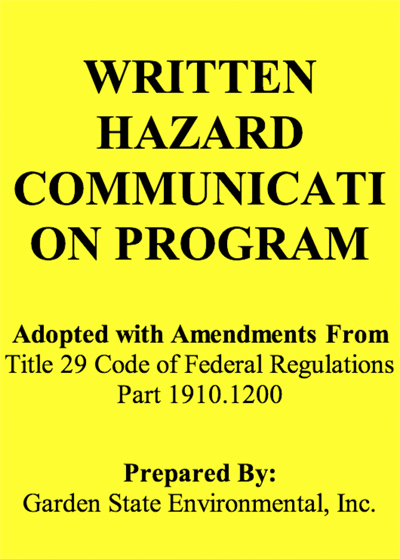OSHA COMPLIANCE
OSHA and NJ-PEOSH Policies, Plans and Procedures:
Examples of GSE’s most requested plans and policies:
- Hazard Communication Policy - [29 CFR 1910.1200 / NJAC 12:100-7]
- Exposure Control Plan (Bloodborne Pathogens) - [29 CFR 1910.1030]
- Personal Protective Equip. Policy (and Hazard Assessment) - [29 CFR Subpart 1, 1910.132-138]
- Respiratory Protection Plan - [29 CFR 1910.134]
- Chemical Hygiene Plan (Laboratory Standard) - [29 CFR 1910.1450]
- NJ-PEOSH Indoor Air Quality [NJAC:100-13 (2007)]
- Hearing Conservation and Noise Control Plans - [29 CFR Subpart G, 1910.95]
- Confined Space Entry Plan - [29CFR 1910.146]
- Hazardous Energy Policy (lock-out/tag-out) - [29 CFR Subpart J, 1920.147]
- Fall Protection - [29 CFR Subpart D, 1910.23, Subpart F, 1910.66]
- Chemical or hazard specific control plans, including medical surveillance. Common examples in Subpart Z include:
- Arsenic (inorganic) - 1910.1018
- Asbestos - 1910.1006
- Benzene - 1910.1028
- Cadmium - 1910.1027
- Chromium(VI) - 1910.1026
- Formaldehyde - 1910.1048
- Lead - 1910.1025
Above regulations and interpretive/supportive documents may be found at www.OSHA.gov and/or https://www.nj.gov/health/workplacehealthandsafety/peosh/peosh-health-standards/

Every OSHA document we prepare:
- is based on the client’s specific hazards and needs
- meets the OSHA-PEOSH regulatory requirements (and have withstood numerous audits)
- is delivered in “final daft” form and in electronic format
- is clear and logically arranged to maximize usefulness
- should be updated annually, or as needed, in accordance with regulations or corporate policy
- should be used as the basis for employee training programs
|

